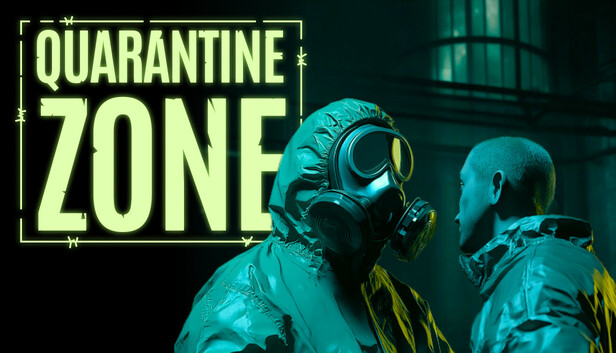Quarantine Zone: The Last Check. Steam wishlists rocketing!

Quarantine Zone: The Last Check – A Designer’s Deep Dive into a Viral Apocalypse Hit 🚧
1. Explosive Growth & Community Reach
Few indie titles skyrocket like Quarantine Zone: The Last Check. What started as a morally charged checkpoint simulator has evolved into a viral behemoth, captivating players and content creators alike.
-
Steam wishlists:
-
May 19: 500,000+ wishlists, entered Steam’s top 60 upcoming games
-
Soon after: 650,000+, breaking into the top 50
-
As of June 2025: nearly 900,000+ wishlists, among the most anticipated unreleased games on the platform
-
-
Viral reach: Over 250–300 million combined views across TikTok, YouTube, and other social platforms
-
Demo launch (May 22, 2025):
-
17,100 peak concurrent players
-
~1,200 daily peak players in early June
-
~650 players still online concurrently, weeks after launch
-
2,279+ reviews, with 90%+ positive feedback
-
2. Design Breakdown: Why It Resonates
From the lens of a top-tier systems designer, Quarantine Zone succeeds where many falter: it builds emotional weight into repeatable gameplay.
-
The “moral tension” engine: Each decision—let them through or put a bullet in them—carries emotional stakes and long-term consequences.
-
Signal layering: Players analyze bitemarks, coughs, temperature scans, and conflicting testimonies—making the “inspection” mechanic a constantly evolving challenge.
-
Replayability through escalation: The first seven in-game days are free to replay, but each run increases pressure, stakes, and consequences.
-
Fortification and base defense: The game subtly evolves into a defensive strategy sim, deepening commitment and raising the narrative stakes.
3. Developer Life‑Hacks: How Brigada Engineered 800K Wishlists
The team at Brigada, a small indie outfit, punched far above their weight. Here’s how:
-
Early influencer seeding
Demo builds were provided to content creators—like DieDevDie—who posted reaction videos that racked up millions of views.
-
Short-form video virality
The game’s intense, choice-driven moments were ideal for TikTok and YouTube Shorts, where bite-sized drama thrives.
-
Publicly tracking wishlist growth
Brigada posted regular milestone updates: 200K, 500K, 650K wishlists—each one a proof-point to convert new interest.
-
Listening to creators
Streamer feedback wasn’t just read—it was implemented. Adjustments were made live based on what worked (and didn’t) in front of thousands.
-
Press & community synergy
They maintained visibility by feeding the press with evolving storylines—from “blowing up on TikTok” to “top 50 on Steam”.
Key lesson: If your game creates emotional, shareable moments—build your marketing around them.
4. Hard Numbers: The Metrics That Matter
|
Metric |
Value / Date |
|---|---|
|
Demo release |
May 22, 2025 |
|
Peak concurrent players |
17,100 |
|
Daily peak players (June) |
~1,200 |
|
Live players (current) |
~649 |
|
Demo reviews |
2,279 total, ~90% positive |
|
Social media reach |
250–300M views combined |
|
Wishlist milestones |
200K → 500K → 650K → ~800K |
5. From a Top Designer’s Lens: Final Thoughts
-
Core strength: Emotional investment. The game succeeds because players care about their actions.
-
Design = shareability: Checkpoint gameplay = content gold.
-
Agile dev loop: Brigada made fast, visible changes based on public reaction. That built trust.
-
Balance of genres: It’s not just a simulator—it’s part social deduction, part base-builder, part survival drama.
For devs: Build around emotions. Polish replayability. And design for content creation from day one.
Indie Dev Cheat Sheet
-
Let influencers in early
-
Design decisions players want to share
-
Turn wishlist growth into marketing events
-
Iterate live from community feedback
-
Market not just your game, but your momentum
🎥 Want the Inside Scoop?
Check out the behind-the-scenes interview with the developers:
👉 Watch: “Working on Quarantine Zone: How We Reached 800K Wishlists”
In this interview, Brigada reveals:
-
How they structured their viral marketing push
-
The tools and platforms they used to track wishlists and conversions
-
Why they embraced early streamers as testers
-
How their design philosophy blended Papers, Please with This War of Mine
-
What’s next for the game as it heads toward full release
A must-watch for any indie team trying to break through in 2025.
Sources
-
Steam charts Games-stats.com and official dev updates
-
Community posts on Reddit, Steam, and TikTok metrics via social aggregators
-
Developer interview: “Working on Quarantine Zone” – YouTube
-
Game page: Quarantine Zone on Steam
-
Demo feedback & player stats from Steam Charts and user review analysis
-
Influencer data: TikTok, YouTube content from creators like DieDevDie